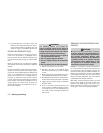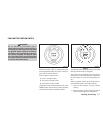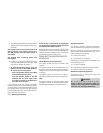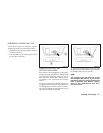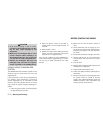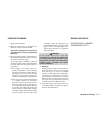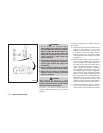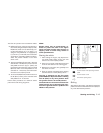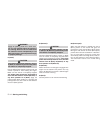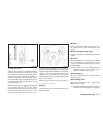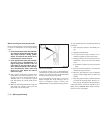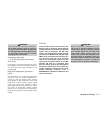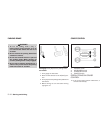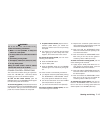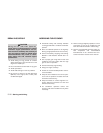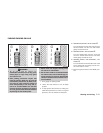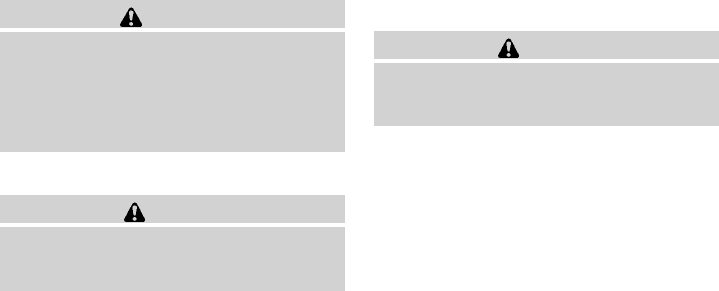
WARNING
Apply the parking brake if the shift selec-
tor is in any position while the engine is
not running. Failure to do so could cause
the vehicle to move unexpectedly or roll
away and result in serious personal injury
or property damage.
P (Park):
CAUTION
To prevent transmission damage, use the
P (Park) or R (Reverse) positiononly when
the vehicle is completely stopped.
Use the P (Park) shift selector position when the
vehicle is parked or when starting the engine.
Make sure the vehicle is completely stopped.
The brake pedal should be depressed to
move the shift selector from N (Neutral) or
any drive position to P (Park). Apply the
parking brake. When parking on a hill, apply the
parking brake first, then move the shift selector
into the P (Park) position.
R (Reverse):
CAUTION
To prevent transmission damage, use the
P (Park) or R (Reverse) positiononly when
the vehicle is completely stopped.
Use the R (Reverse) position to back up. Make
sure the vehicle is completely stopped before
selecting the R (Reverse) position. The brake
pedal must be depressed to move the shift
selector from P (Park), N (Neutral) or any
drive position to R (Reverse).
N (Neutral):
Neither forwardnor reverse gear isengaged. The
engine can be started in this position. You may
shift to N (Neutral) and restart a stalled engine
while the vehicle is moving.
D (Drive):
Use this position for all normal forward driving.
Ds (Drive sport):
When the shift selector is shifted from the D
(Drive) position to the manual shift gate, the
transmission enters the Ds (Drive Sport) mode.
Moving the shift selector to the Ds (Drive Sport)
position allows smooth acceleration or decelera-
tion on a hilly road by moving into a lower gear
automatically. When canceling the Ds mode, re-
turn the shift selector to the D (Drive) position.
The transmission returns to the normal driving
mode.
5-14 Starting and driving



